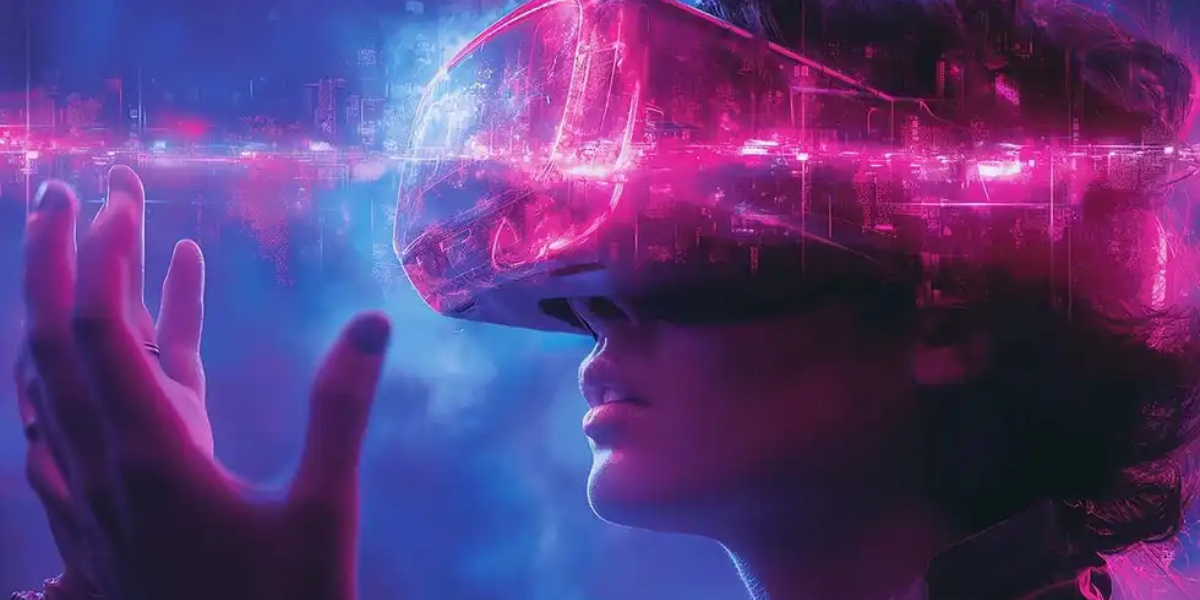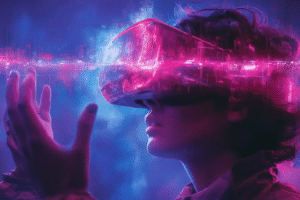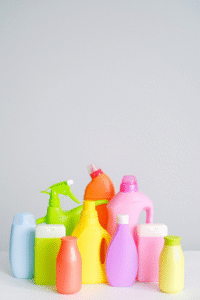
Why Your Business Needs 3D Design Services in 2025?
As India’s manufacturing and tech sectors embrace the future, professional 3D design services are becoming indispensable. By 2025, India’s 3D printing market will top $20.6 billion and grow at nearly 19% annually. No longer niche, 3D design solutions in India now fuel rapid prototyping and innovation across industries – from aerospace and automotive to healthcare and consumer goods. For Indian businesses in manufacturing, jewelry, automotive, education or product development, leveraging 3D modeling, scanning and printing means faster time-to-market, richer customer engagement, and a competitive edge in branding. As Protomont Technologies – India’s trusted 3D solutions partner – puts it, 3D printing lets “designers… realize and visualize their ideas and bring them to life”.
Accelerating Product Innovation with Rapid Prototyping:
Rapid prototyping is a game-changer for product development. Instead of waiting weeks for machined prototypes, designers can now iterate in days. Industry analysts note that Indian manufacturers are “increasingly embracing 3D printing to accelerate product innovation” creating design revisions in a matter of days. This agility empowers engineering teams to test and refine concepts immediately making the development process far more efficient in practice many Indian SMEs have brought 3D printers in-house to slash development cycles. For example, firms around Chennai report cutting prototype build time by over 50% and halving outsourcing costs by adopting in-house printing. Similarly, companies in Bangalore and Pune use entry level industrial printers to keep R&D local, protecting intellectual property and reducing delays.
Such rapid prototyping is key to staying competitive. According to a recent supply-chain report, introducing 3D virtual prototyping and extended reality (AR/VR) tools “make new product development more efficient, agile and interactive”. By creating digital 3D models first, teams can simulate and test products virtually and only move to physical prototypes when designs are mature. The result is compressed development cycles: companies can concurrently develop, test and refine products rather than follow slow, linear stages. In practice, this means a faster path from idea to customer, a critical advantage in markets where product life cycles are shrinking.
Practical example: An Indian auto components manufacturer used Protomont’s 3D printers to produce prototypes of a new engine bracket. Instead of ordering machined parts from overseas (which took weeks) they iterated multiple 3D printed prototypes in days. This let their engineers identify design flaws early reducing the final development time by 40% and saving on tooling costs.
3D Modeling for Customization and Precision:
Professional 3D modeling and design services let businesses innovate on product form and function. Using advanced CAD tools and design-for-manufacture techniques, companies can create highly customized parts and assemblies that were impossible or costly with traditional methods. For example, industrial 3D design enables optimizing shapes for strength and lightness (such as lattice structures), or integrating multiple components into one part. In manufacturing, this translates to lighter machines and vehicles, and on-demand production of niche components without expensive tooling. According to TechSci Research, in sectors from automotive to dental implants, “3D printing’s ability to produce highly customized components without expensive tooling makes it ideal for meeting localized market needs”.
For automotive and aerospace firms, 3D modeling is now routine for cutting-edge projects. Designers use CAD and simulation tools to build full digital twins of vehicle parts, testing them in software before any hardware exists. Immersive technology further enhances this: AR/VR solutions allow engineers to visualize 3D CAD models in the real world. For instance Indian automakers are using AR headsets to overlay designs on physical prototypes validating ergonomics and fit without building new clay models. This dramatically reduces the need for multiple physical mock ups. One industry report notes that AR tools “allow CAD designers to superimpose 3D CAD data on physical vehicles…significantly reducing the need for building multiple prototypes”.
Protomont Technologies LLP 3D design services integrate seamlessly with manufacturing workflows. We provide design for manufacturing expertise to ensure models are optimized for chosen processes (FDM, SLA, DLP etc.). With tools like Anycubic and Elegoo resin printers or Bambu Lab FDM systems, customers can quickly turn these optimized designs into real parts. And for finishes or complex features, Protomont’s xTool laser cutters can engrave or mill patterns into prototypes. In short, Protomont offers an end-to-end 3D design workflow: from concept CAD model to scanned real-world objects to final printed components all under one roof.
Engaging Customers with Immersive 3D Experiences:

Beyond engineering 3D design services are transforming customer engagement. Photorealistic 3D models and animations grab attention and build trust. For example the jewelry sector now uses 3D renderings in e-commerce to let customers see every facet of a ring or necklace online. High-quality 3D visuals can significantly boost conversions: one provider notes that “3D jewelry visualization helps customers judge the product better, prompting more purchases” and lowers return rates. In fact SunTec India reports that 3D configurators and 360° product spinners increase user engagement and satisfaction, lengthening sessions and strengthening brand image.
Globally, top retailers are embracing 3D and AR. Major platforms like Amazon and Walmart have integrated interactive 3D models and virtual try-on features in their listings. These immersive experiences let shoppers place products in their own space or “try on” items virtually which has been shown to boost sales and reduce returns. By contrast, brands without 3D assets risk losing customers to more interactive offerings. A furniture seller, for instance might allow shoppers to view a 3D model of a sofa from all angles or even in AR within their living room. A fashion brand could offer a VR fitting-room experience. These cutting edge applications rely on the 3D design expertise Protomont provides: we can create AR/VR-ready 3D assets (e.g. STL or USDZ files) that fit into mobile apps and web platforms.
Mini-case (Jewellery): A Delhi-based jewelry brand partnered with Protomont to develop 3D models of its new ring collection. Protomont’s designers produced photorealistic renders and a web-based 360° viewer, enabling customers to rotate each piece online. The result was a 15% jump in online inquiries. As Protomont Technologies India highlights, “photorealistic 3D images…provide a detailed view that enhances customer confidence and helps drive sales”.
Mini-case (Automotive Marketing): An auto dealership used Protomont’s services to create a virtual showroom. Customers could explore a car’s interior in VR and customize its color in real-time. This interactive 3D experience generated buzz and led to more showroom visits. Immersive applications like this are aligned with industry trends: research shows AR/VR in automotive helps build brand loyalty by letting buyers “explore virtual showrooms, compare models and make informed decisions”.
Industry Use Cases: Making 3D Design Work for You
- Manufacturing & Engineering: 3D design and printing are revolutionizing factory floors. From custom machine fixtures to ergonomic tool handles, 3D-modelled parts can be produced on demand. For example an electronics maker prints jigs to hold components during assembly saving months of machine-shop work. In large-scale production, 3D design enables lightweighting creating honeycomb structures or optimized brackets which reduces material costs. India’s automotive and aerospace firms are already doing this: they use 3D printing for lightweight parts and rapid prototyping, testing designs before mass tooling. And with industrial 3D design software engineers can simulate load and flow on these complex geometries before printing.
- Jewelry: In a high-value detail oriented field like jewelry photorealistic 3D product modeling is invaluable. Jewelry designers use CAD and 3D printing to craft intricate prototypes (e.g. wax models for lost-wax casting). For sales 3D visuals overcome online limitations. A goldsmith can show a diamond ring from every angle in a digital catalog or even provide a WebGL-based configurator so customers customize gems or metals themselves. This not only boosts eCommerce but also protects designs: fine jewelers can showcase new designs without revealing physical prototypes to competitors. Protomont’s Anycubic and Elegoo printers produce the finely detailed prototypes jewelry requires while our rendering team turns designs into eye-catching marketing assets.
- Automotive: Car companies thrive on innovation, and 3D design services are central to that. Design engineers import clay sculpted ideas into CAD and refine them digitally. Then VR simulations allow team reviews without waiting for full-size mock ups. AR/VR lets engineers inspect 3D models on the factory floor: for instance, overlaying a 3D engine component on a test chassis to check fit. This significantly cuts the need for repeated clay or metal prototypes. After-market and service centers also benefit: 3D scanners (like Revopoint’s MIRACO Plus) can capture worn parts’ exact shape. As the 3D Printing Industry observes, Revopoint’s high-precision scanners “are suitable for the automotive [industry]…capturing detailed measurements of vehicle parts, streamlining repairs, reproductions, prototyping and quality control”. A garage might scan a broken gear 3D-model it with reverse engineering and print a replacement all in-house.
- Education & Training: Schools and training centers are increasingly using 3D design to make learning hands-on. STEM curricula now include design projects where students create and print 3D models of science and math concepts. Beyond printing, Indian education is exploring full AR/VR STEM labs. For example the Tamil Nadu government launched “Meta Kalvi” VR labs in schools, providing real-time 3D environments where students and teachers interact with immersive science and math lessons. By 2025 we expect even more edtech startups to leverage Protomont’s 3D printers and design expertise to build educational kits (like anatomical models, robotics parts, or interactive AR biology demos). Investing in 3D design tools now prepares the next generation of engineers and designers.
- Product Development & Startups: For any new product, rapid iterations are crucial. Startups use 3D design services to go from sketch to prototype to pilot production quickly. A gadget maker, for example, can iterate smartphone case designs with Protomont’s printers and simulation tools, testing ergonomics and durability. By integrating industrial 3D modeling, CNC machining and even injection molding analysis, a full 3D design workflow ensures new products are vetted at every stage. This reduces expensive late stage changes.
In all cases, 3D design solutions in India are about speed and flexibility. Whether it’s iterating new tool parts, creating detailed marketing visuals or teaching with virtual reality, businesses that adopt 3D design services today gain a strategic advantage.
Protomont Technologies: Your 3D Design Partner
Protomont Technologies has been delivering 3D solutions since 2019. Our founders (veterans of the 3D printing field) started Protomont to “inspire ideas and release imaginations” with the right hardware and expertise. Today, Protomont is India’s reliable partner for everything 3D: we offer industrial FDM printers (Anycubic, Bambu Lab, Creality, etc.), high-resolution resin/DLP printers (Anycubic Photon series, Elegoo Saturn/DLP), professional 3D scanners (Revopoint MIRACO, Creality scanners etc.) and laser engravers/cutters (xTool S1, M1, F1 among others). We stock all the supplies from premium resins to engineering-grade filaments so you can prototype without delays.
Critically Protomont also provides expert 3D design and modeling services our team of CAD specialists and graphic artists can turn your ideas into print-ready 3D models and engaging visualizations. Need an AR ready asset for a marketing campaign or an optimized CAD model for industrial prototyping? We handle the software side of the workflow too. By combining design services with our equipment and materials we offer an end-to-end solution: you get a cohesive 3D design and manufacturing process under one roof.
Thanks to partnerships with brands like Anycubic and Revopoint, Protomont can customize solutions for your sector. For instance, we can configure a 3D printer and resin bundle ideal for jewelry casting, or a mobile scanning + printing kit for field service teams. And because we’re local our support team can work with you directly on prototyping and design challenges.
Next Steps
In 2025, 3D design services are no longer optional extras they are core business tools from speeding up R&D to creating immersive customer experiences the benefits are clear and well documented. Protomont Technologies is proud to be India’s trusted partner on this journey. We invite you to explore our 3D Design Services offerings: whether you need rapid prototyping product visualization or custom CAD modelling our team can help Visit Protomont Technologies LLP website to learn more or contact us today for a personalised consultation. Let’s turn your next big idea into reality with cutting-edge 3D design.


